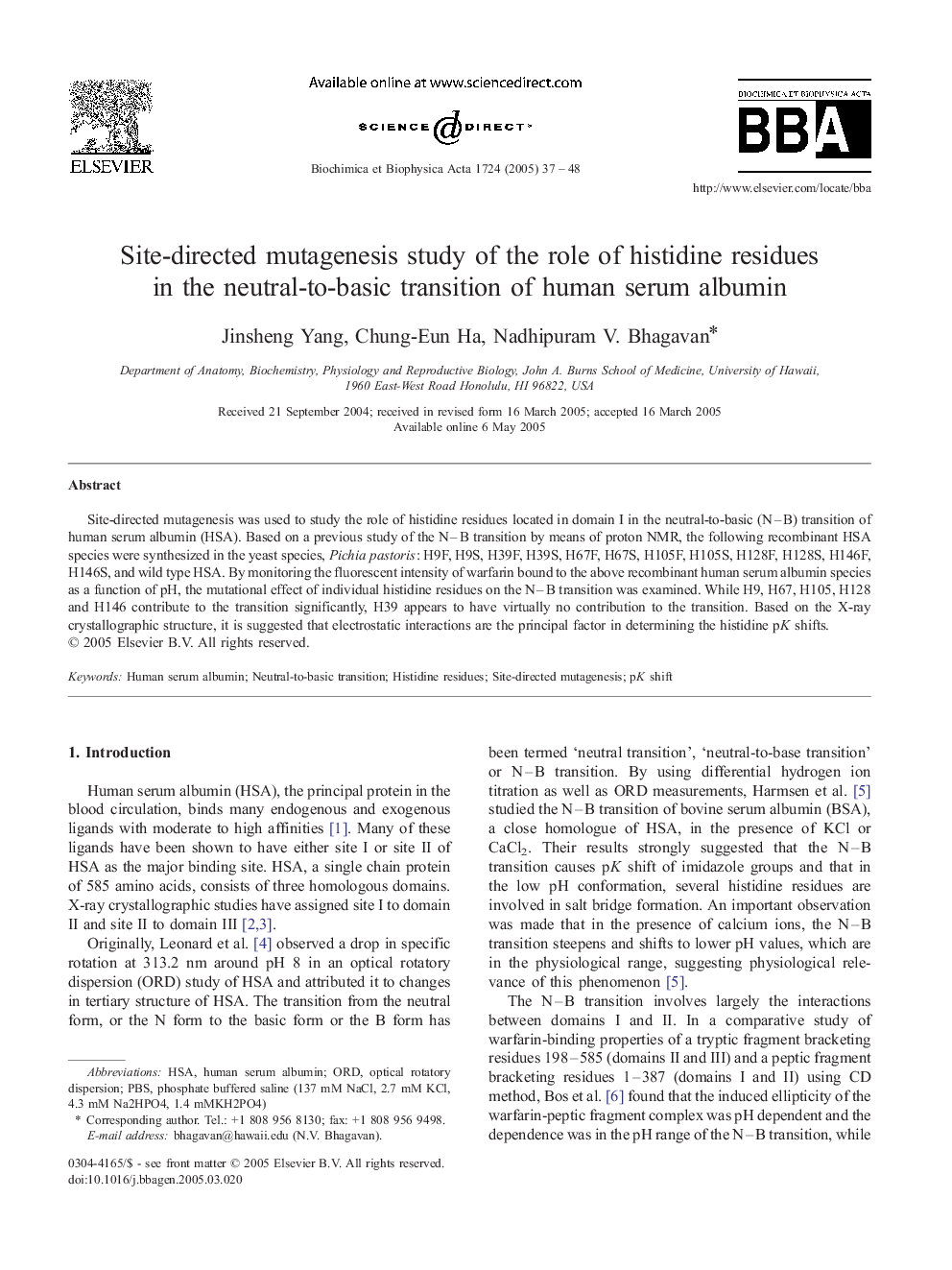| Article ID | Journal | Published Year | Pages | File Type |
|---|---|---|---|---|
| 9886093 | Biochimica et Biophysica Acta (BBA) - General Subjects | 2005 | 12 Pages |
Abstract
Site-directed mutagenesis was used to study the role of histidine residues located in domain I in the neutral-to-basic (N-B) transition of human serum albumin (HSA). Based on a previous study of the N-B transition by means of proton NMR, the following recombinant HSA species were synthesized in the yeast species, Pichia pastoris: H9F, H9S, H39F, H39S, H67F, H67S, H105F, H105S, H128F, H128S, H146F, H146S, and wild type HSA. By monitoring the fluorescent intensity of warfarin bound to the above recombinant human serum albumin species as a function of pH, the mutational effect of individual histidine residues on the N-B transition was examined. While H9, H67, H105, H128 and H146 contribute to the transition significantly, H39 appears to have virtually no contribution to the transition. Based on the X-ray crystallographic structure, it is suggested that electrostatic interactions are the principal factor in determining the histidine pK shifts.
Keywords
Related Topics
Life Sciences
Biochemistry, Genetics and Molecular Biology
Biochemistry
Authors
Jinsheng Yang, Chung-Eun Ha, Nadhipuram V. Bhagavan,
